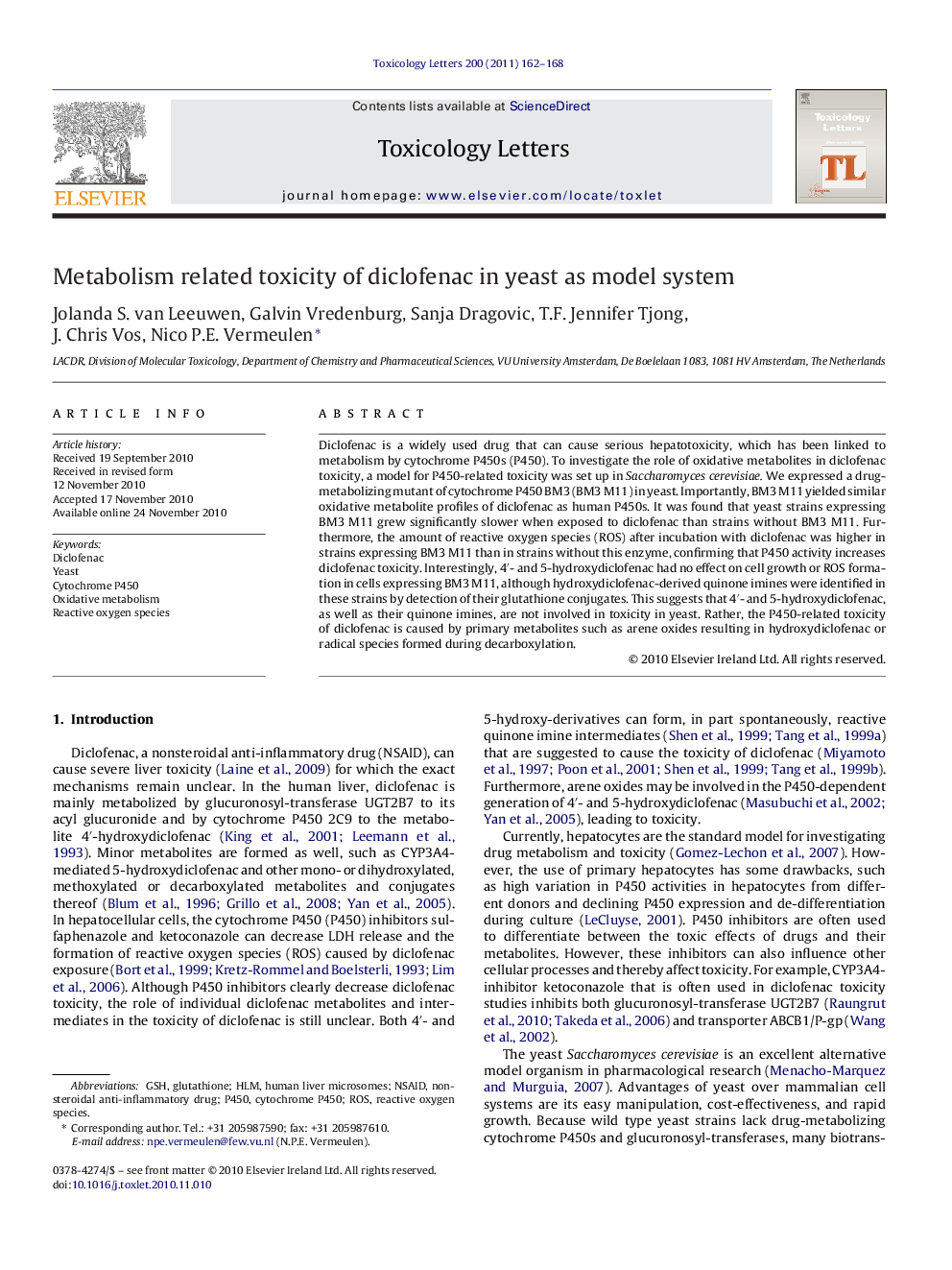| کد مقاله | کد نشریه | سال انتشار | مقاله انگلیسی | نسخه تمام متن |
|---|---|---|---|---|
| 2600389 | 1562638 | 2011 | 7 صفحه PDF | دانلود رایگان |

Diclofenac is a widely used drug that can cause serious hepatotoxicity, which has been linked to metabolism by cytochrome P450s (P450). To investigate the role of oxidative metabolites in diclofenac toxicity, a model for P450-related toxicity was set up in Saccharomyces cerevisiae. We expressed a drug-metabolizing mutant of cytochrome P450 BM3 (BM3 M11) in yeast. Importantly, BM3 M11 yielded similar oxidative metabolite profiles of diclofenac as human P450s. It was found that yeast strains expressing BM3 M11 grew significantly slower when exposed to diclofenac than strains without BM3 M11. Furthermore, the amount of reactive oxygen species (ROS) after incubation with diclofenac was higher in strains expressing BM3 M11 than in strains without this enzyme, confirming that P450 activity increases diclofenac toxicity. Interestingly, 4′- and 5-hydroxydiclofenac had no effect on cell growth or ROS formation in cells expressing BM3 M11, although hydroxydiclofenac-derived quinone imines were identified in these strains by detection of their glutathione conjugates. This suggests that 4′- and 5-hydroxydiclofenac, as well as their quinone imines, are not involved in toxicity in yeast. Rather, the P450-related toxicity of diclofenac is caused by primary metabolites such as arene oxides resulting in hydroxydiclofenac or radical species formed during decarboxylation.
Journal: Toxicology Letters - Volume 200, Issue 3, 5 February 2011, Pages 162–168